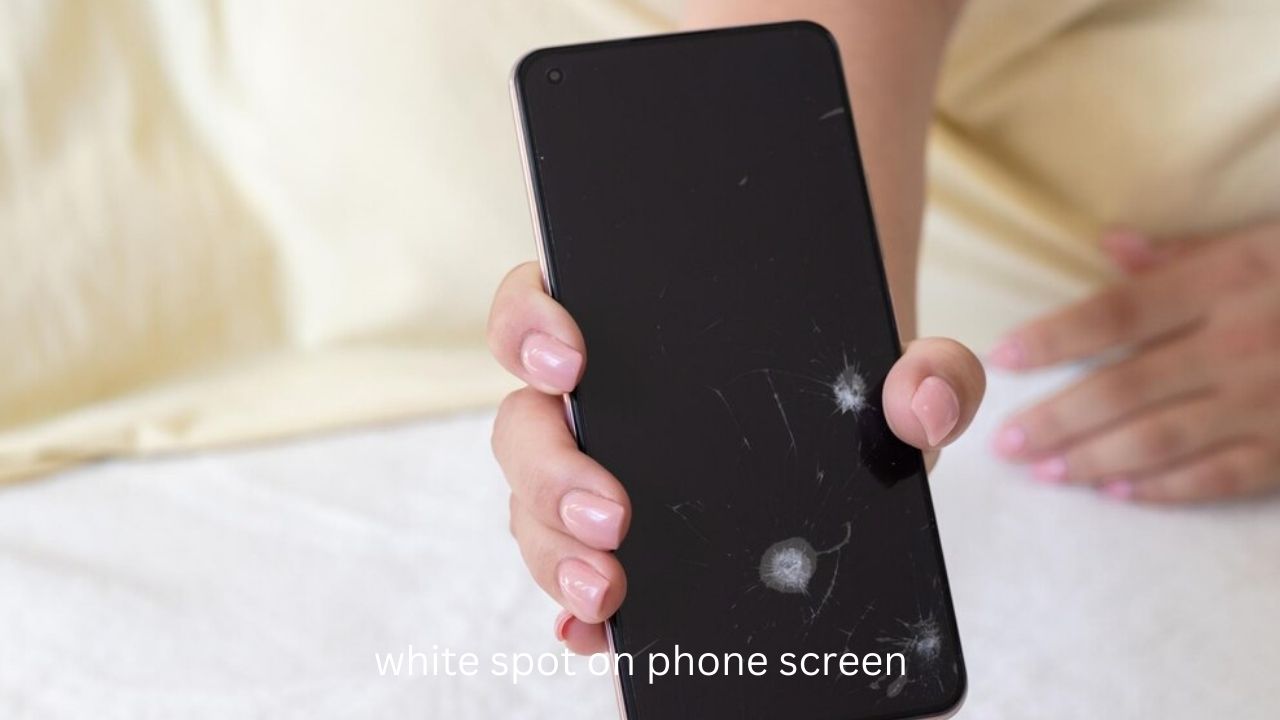Many smartphone users notice an annoying white spot on the phone screen, which affects the viewing experience. This issue can occur suddenly or develop over time, causing frustration. Understanding the causes and finding the right solution helps in fixing the problem effectively.
Table of Contents
- Introduction to White Spots on Phone Screens
- Common Causes of White Spots on Phone Screens
- Difference Between White Spots and Dead Pixels
- How Pressure Affects Screen Display
- How Heat Exposure Causes White Spots
- Software Glitches That Lead to White Spots
- Impact of Physical Damage on White Spots
- How Manufacturing Defects Create White Spots
- Temporary Fixes for White Spots on Screens
- DIY Solutions for Fixing White Spots on Phone Screens
- When to Seek Professional Repair Services
- How to Prevent White Spots from Appearing
- Screen Protectors and Their Role in Preventing White Spots
- White Spots on OLED vs. LCD Screens
- Frequently Asked Questions About White Spots on Phone Screens
1. Introduction to White Spots on Phone Screens
A white spot on the phone screen can be frustrating for users who rely on their devices daily. This issue often appears as a bright patch that stands out from the rest of the display. Many factors contribute to this problem, and finding the exact cause helps in determining the right solution.
Several users ignore white spots, assuming they will disappear over time. However, leaving them untreated can lead to further screen damage. Understanding the potential causes helps in preventing permanent issues.
2. Common Causes of White Spots on Phone Screens
Many reasons cause white spots on phone screens, and identifying the exact problem ensures effective troubleshooting. Some common causes include:
- Pressure Damage: Applying excessive force on the screen creates bright spots.
- Overheating: Prolonged exposure to high temperatures damages the screen’s internal components.
- Manufacturing Defects: Some screens develop white spots due to factory faults.
- Software Issues: Bugs or glitches cause display anomalies.
- Physical Damage: Dropping the phone damages the screen layers, resulting in bright spots.
Each cause affects screen performance differently, so finding the right fix depends on identifying the root problem.
3. Difference Between White Spots and Dead Pixels
White spots and dead pixels look similar, but they have different causes. A dead pixel appears as a single, non-responsive dot on the screen. It occurs when individual pixels fail to function properly.
White spots usually cover a larger area and result from pressure damage or internal defects. Unlike dead pixels, white spots sometimes disappear with minor fixes. Identifying the difference helps in applying the correct solution.
4. How Pressure Affects Screen Display
Applying pressure on a phone screen damages the internal layers, leading to bright spots. Placing heavy objects on the device or pressing too hard while cleaning causes this issue.
Many users unknowingly apply pressure while keeping their phones in tight pockets. Over time, this results in white spots that expand if left unaddressed. Avoiding unnecessary pressure prevents screen-related problems.
5. How Heat Exposure Causes White Spots
Extreme temperatures affect phone screens and lead to white spots. Leaving the device in direct sunlight or near heat sources causes the display to malfunction. Heat expands internal components, leading to display irregularities.
Some users notice white spots appearing after prolonged gaming sessions. Keeping the phone cool prevents damage and ensures optimal screen performance.
6. Software Glitches That Lead to White Spots
Sometimes, white spots result from software issues rather than physical damage. System glitches or corrupted display settings cause visual anomalies. Restarting the phone or performing a software update often resolves this issue.
Many users report temporary white spots after installing buggy applications. Checking for software updates or performing a factory reset sometimes eliminates the problem.
7. Impact of Physical Damage on White Spots
Dropping a phone or hitting it against a hard surface often causes white spots. Internal display layers shift due to impact, creating bright areas on the screen. Cracks and deep scratches also contribute to this issue.
Even minor drops lead to display problems if internal connections loosen. Using a protective case reduces the risk of screen damage.
8. How Manufacturing Defects Create White Spots
Some phones develop white spots due to faulty manufacturing. Poor quality control results in defective screens that show abnormalities over time. Users sometimes notice bright patches soon after purchasing a new device.
If white spots appear without any external damage, manufacturing defects might be responsible. Checking warranty coverage helps in getting a replacement or repair.
9. Temporary Fixes for White Spots on Screens
Some quick fixes reduce the visibility of white spots. While they do not offer permanent solutions, they provide temporary relief.
- Restarting the Phone: A simple reboot sometimes resolves software-related white spots.
- Screen Massage Method: Gently pressing around the white spot redistributes screen pressure.
- Lowering Brightness: Reducing screen brightness minimizes the appearance of white spots.
These methods provide temporary improvements, but permanent fixes require professional repair or replacement.
10. DIY Solutions for Fixing White Spots on Phone Screens
Several DIY methods help in reducing white spots. Some effective solutions include:
- Applying Light Pressure: Using a microfiber cloth, gently massage the affected area.
- Cooling the Phone: If overheating caused the issue, placing the device in a cool environment helps.
- Updating Software: Installing the latest updates fixes software-related display problems.
Trying these methods before seeking professional help sometimes resolves the issue without additional costs.
11. When to Seek Professional Repair Services
If DIY solutions fail, professional repair becomes necessary. Some situations require expert assistance, such as:
- Large White Spots: Expanding bright patches indicate serious screen damage.
- Persistent Issues: If white spots remain after troubleshooting, professional repair ensures a proper fix.
- Physical Cracks: Broken screens need replacement to restore functionality.
Visiting an authorized service center guarantees quality repairs without risking further damage.
12. How to Prevent White Spots from Appearing
Preventing white spots saves time and money on repairs. Some effective prevention tips include:
- Avoid Pressure: Do not place heavy objects on the phone.
- Keep It Cool: Avoid exposing the device to extreme temperatures.
- Use a Screen Protector: Protecting the screen reduces potential damage.
Following these steps ensures long-term screen durability.
13. Screen Protectors and Their Role in Preventing White Spots
A high-quality screen protector prevents direct damage to the display. It absorbs minor impacts, reducing the risk of pressure-related white spots.
Using a tempered glass protector adds an extra layer of safety. Investing in good protection minimizes potential screen issues.
14. White Spots on OLED vs. LCD Screens
White spots behave differently on OLED and LCD screens. OLED screens use self-lit pixels, making white spots less common but harder to fix. LCD screens rely on backlighting, which sometimes causes uneven brightness and bright spots.
Understanding screen differences helps in determining the best repair method.
15. Frequently Asked Questions About White Spots on Phone Screens
1. Can white spots disappear on their own?
Sometimes, minor white spots fade over time, but serious ones require repair.
2. Do white spots affect touchscreen functionality?
Most white spots only impact display appearance and do not interfere with touch response.
3. Can factory resets fix white spots?
If software issues cause the problem, resetting the phone sometimes helps.
4. Do all screen protectors prevent white spots?
Tempered glass protectors provide better protection than plastic ones.
5. Should I replace my phone if white spots appear?
If the issue worsens, screen replacement offers a better solution.
Conclusion
A white spot on a phone screen affects the viewing experience and indicates underlying display problems. Identifying the cause helps in applying the right fix. Using preventive measures ensures long-lasting screen performance.











